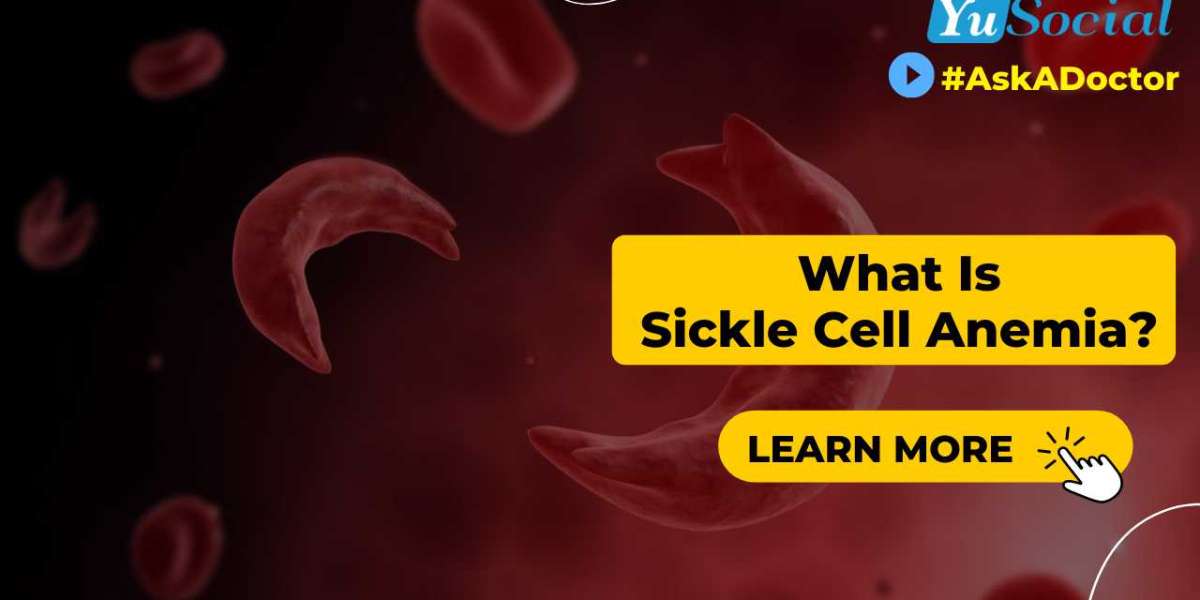Introduction: What is Sickle Cell Anemia?
Sickle cell anemia is a blood disorder that affects red blood cells. The cells become shaped like sickles or crescent moons, which can block blood flow and oxygen to the body's organs.
The condition is passed down through families who have a gene for the disorder.
If you are visually driven, you can watch the video below where I and Dr. Chioma Ejim talk about Sickle Cell Anemia, its prevention, symptoms and management.
What are the causes and symptoms of Sickle Cell Anemia?
Sickle cell anemia is a hereditary blood disorder characterized by the presence of an abnormal type of hemoglobin in the red blood cells.
Hemoglobin is the protein molecule in red blood cells that carries oxygen from the lungs to all body tissues.
The abnormal hemoglobin causes the red blood cells to become sickle-shaped (stiff and sticky). These sickled cells can get stuck in small blood vessels, which can block blood flow and cause pain and tissue damage.
Symptoms can include:
- Yellowish discoloration of the eye
- Passage of coke-colored urine
- Episodes of bone-pain crisis
- Frequent febrile illness
- Fatigue
- Shortness of breath
- Being small for age
- Painful swelling of the hand and feet(dactylitis)
- Occasional fast breathing, weakness and dizziness
Is Sickle Cell Anemia Contagious or Only Hereditary?
Sickle Cell Anemia is a hereditary blood disorder and it is not contagious.
Factors That Trigger Sickle Cell Anemia Crisis
The factors that trigger crisis in Sickle Cell patients include:
- Infections such as parasitic infections like malaria
- Increased exposure to cold which usually triggers bone pain crisis
- Increased activity/stress
How is Sickle Cell Anemia treated?
Treatment for sickle cell anemia varies depending on the severity of the disease and the symptoms.
Some common treatments include taking of antibiotics, pain medications, getting regular blood transfusions and managing other symptoms.
The last resort may be bone marrow transplant which patients may not survive, due to complications that may arise from the treatment.
What are some risks of Sickle Cell Anemia?
People who suffer from Sickle Cell disease run economic, social and health risks.
Economic Risk
For couples who both have the AS-AS blood genotype and either ignorantly or adamantly go ahead to bear children, they face the risk of spending a whole lot in managing the health of their child(ren).
The costs usually arise from frequent visit to the hospital for routine check up, frequent purchase of routine drugs, frequent blood transfusions and many other unforeseen costs.
Social Risk
Stigmatization
People with Sickle Cell disease may face the risk of stigmatization as some of them commonly have stunted growth, frontal skull bossing and egg-on-stick appearance (especially in children).
Choice Of A Spouse
Inability to marry a spouse of choice due to sickle cell traits, present in the partners involved.
Health Risk
Health risks may include early/increased risk of stroke, seizures, eye disorders, acute chest syndrome, acid peptic disease, splenomegaly(increased size of the spleen), sickle cell nephropathy, cholethiasis(gall stones), increased risk of urinary tract infection, priapism(prolonged, uncontrollable penile erection), chronic leg ulcer, frequent anemia.
What is the prognosis for someone with sickle cell anemia?
The average life expectancy of a Sickle Cell Anemia patient is around late 40s. Sickle Cell Anemia has the increased risk of organ damage.
This is due to the reduction in blood flow to these organs and so most of these patients start manifesting symptoms/signs of these organ failures, which ultimately leads to their demise.
How do people living with sickle cell anemia manage their condition?
People living with sickle cell anemia must manage their condition carefully to avoid complications. This may include taking medication, following a special diet, and getting regular check-ups.
Some people also find it helpful to join a support group or talk to a counselor. Managing sickle cell anemia can be difficult, but it is possible to live a full life with the condition.
Conclusion
Having Sickle Cell Anemia is not the end of the world. People with Sickle Cell disease can live long, healthy and productive lives. There are many people with Sickle Cell disease who have made their way to college.










Israel Unya 2 yrs
I am honored to have anchored this session. The lessons learned are quite priceless.